Do you love the bright acidity of Kenyan coffee, but miss the chocolaty notes of Colombian? Have you ever sipped a steaming cup of Costa Rican single-origin and wished you could complement the taste with a dash of richness and body? The solution to enjoying the unique characteristics of different coffee beans is to blend them together–but, of course, that’s easier said than done.
Creating the perfect coffee blend demands a level of finesse that’s only ever achieved through practice. To do this right, you need to have knowledge of the geographical factors, chemistry, and even the biology of all the different coffee beans. What characterizes each different bean? And how can you effectively blend them to complement each other and match your preferences? Well, read on for an in-depth guide on how to create your own coffee blends right from your own kitchen!
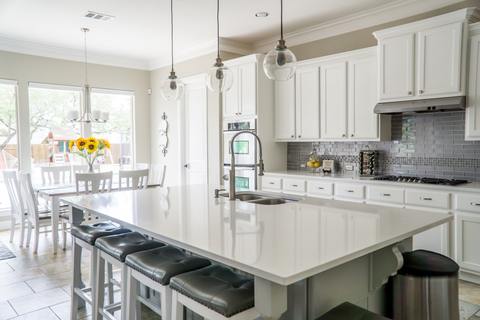
Single-Origin vs. Blends
Single-origin coffee refers to beans that are grown and harvested in one particular region. Please note that the term “region” may refer to a country or a specific micro-climate found in a certain area. For more on single-origin coffee, check out our complete guide to single-origin coffees from around the world. You can even use the information to help you determine the level of acidity, flavors, and body of your coffee!
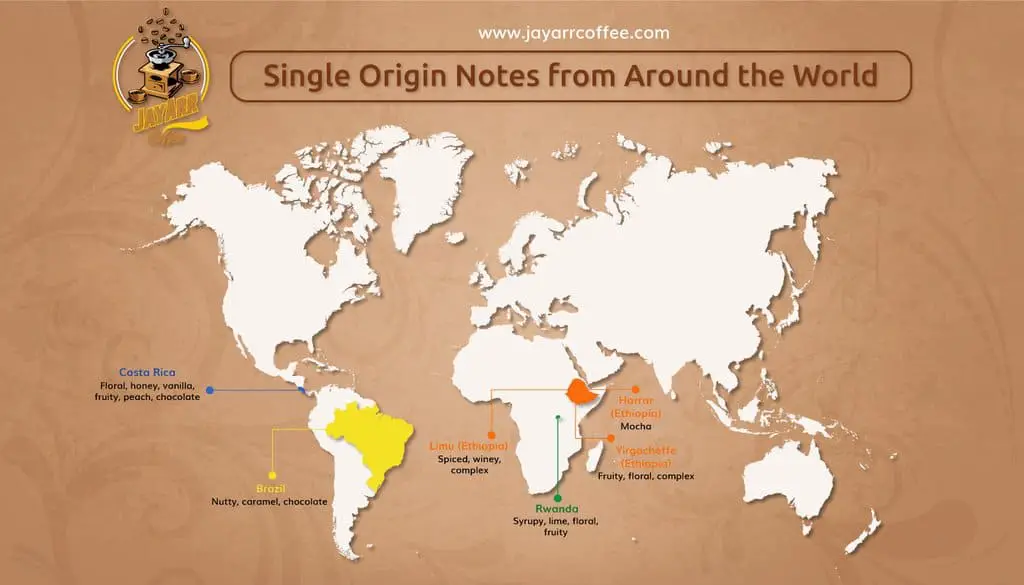
So, why create a coffee blend in the first place when single-origin sounds like a coffee aficionado’s best friend? Well, we do this for a few reasons:
- Consistency: Most coffee lovers demand consistency all year-round. Unfortunately, single-origin coffees are often only available depending on the growing season in its geographical location of origin. Blending coffees, however, allows you to produce a repeatable flavor profile by providing for smaller changes when a component of the blend is substituted for another. Creating a blend also allows you to bolster weaker flavor characteristics of a base coffee.
- Cost Cutting: A lot of large commercial roasters blend their coffee as an attempt to cut down on costs. Instead of doing away with coffee beans that are in low demand, these roasters opt to blend high-quality coffee beans with lower-grade types. Besides, most single-origin coffees are quite expensive.
- Signature Brews: One of the best reasons to create your own coffee blend is to come up with a signature brew that’s unique to your preferences. If you play your cards right, your coffee blends will provide you with a cup of Joe that has greater complexity and balance than any of its constituent parts. Your primary goal should be to create a coffee blend that combines beans with complementary flavors.

Factors to Consider when Selecting Coffees for Your Blend
Ever wondered what determines the taste profile of your favorite single-origin coffee? Well, there are several contributing factors causing the particular body, acidity, and unique tasting notes of each coffee:
- Geographical Variables: Altitude, rainfall, humidity, temperature, mineral content, soil pH, and even nearby crops all play a role in the resulting flavor of coffee. Each of these factors leads to various flavors and different aromatic profiles.
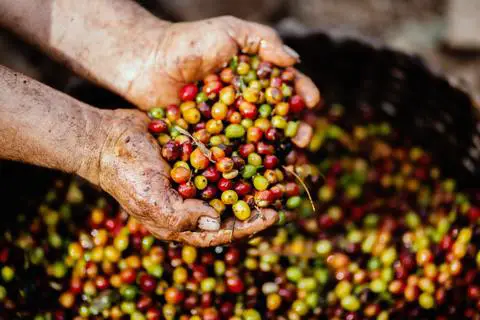
- Coffee Plant: Most coffee types are either Robusta or Arabica–with the latter accounting for over 70% of the global supply. So, which coffee types are best for your blend? Robustas are known for their bitterness, acidic taste, and high caffeine content. Generally, you should be keeping to higher quality Arabica beans unless you are looking for a higher caffeine blend.
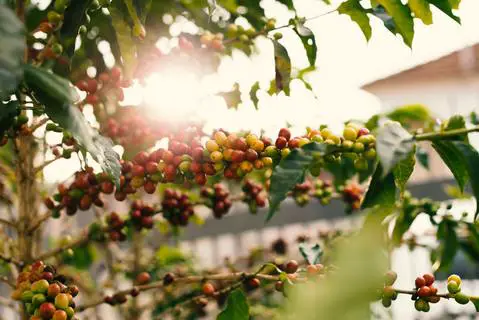
- Processing Methods– Dry Processing vs. Wet Processing: Although the main purpose of any processing method is to separate the coffee bean from the pulp, different processing methods lead to significantly different characteristics and even chemical reactions within the bean. For example, wet processing facilitates a delicate aroma thanks to the light fermentation that occurs. On the other hand, dry processing produces coffee with a relatively richer body. Make sure to note the processing method a coffee underwent when trying to achieve a particular body!
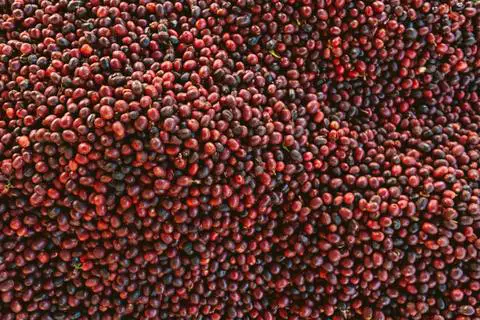
- Roasting: What floats your boat: a light, a medium, or a dark roast? Although roast profile does depend on preference, most agree that the bitterness of dark roasts can overwhelm the flavor of your coffee blend. The reason for this is largely that dark roasts extract easier/more quickly than lighter roasts. This can make blending different roast profiles challenging- it can be done, but is often more challenging than you might initially expect!
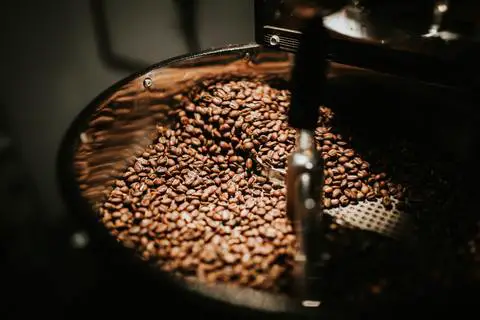
How to Choose the Components of Your Coffee Blend
As we noted earlier, when selecting the components of your coffee blend, it’s important to keep an eye on key characteristics; the sweetness/aromas, acidity, and the body/mouth feel. You can start by listing the origins and characteristics of each coffee you plan to incorporate into your blend.
When it comes to acidity, Guatemalan coffee is an excellent place to start. You can also give Mexican (Chiapas) coffee a try to give your blend that crisp bite. Ethiopian Yirgacheffe is a classic acidity example that works great in blend- particularly if Yirgacheffe on its own is a bit too strong for your palette. The citrusy, acidic, and bright flavors represent the higher toned characteristics of a blend- and higher tones that initially seem overwhelming to you on their own may work great as part of a blend.
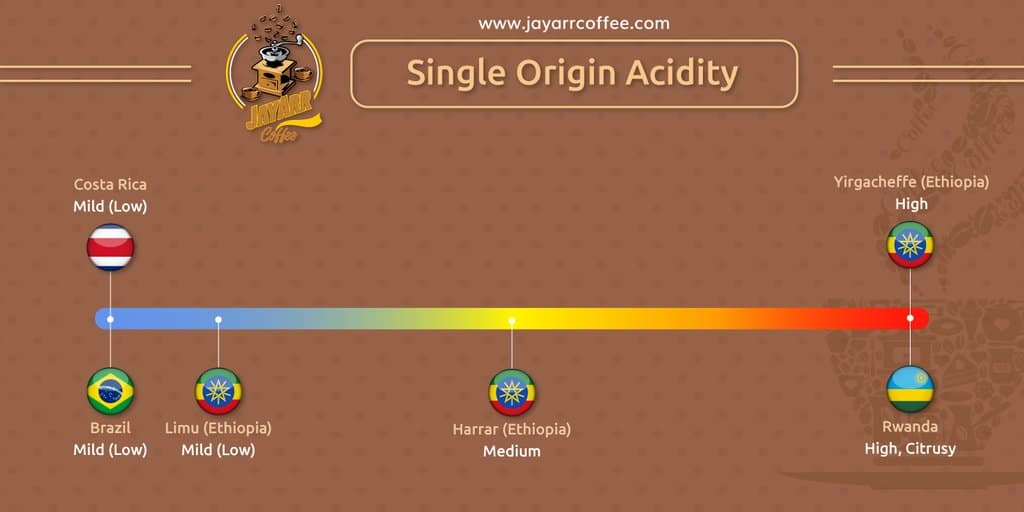
For body/richness, Indonesian coffees like Sumatra or Sulawesi Toraja are great options. Origins like Kenya, Papua New Guinea, or Rwanda all offer that thicker mouthfeel that can bolster your blend.

For sweetness, you may consider high-quality washed coffees from Central America. Coffees from Panama, El Salvador, Haiti, or Venezuela can provide a pleasant, proper sweetness paired with captivating fruity notes.
We’ve put together a handy chart to consider when looking for the right coffees to constitute your blend:
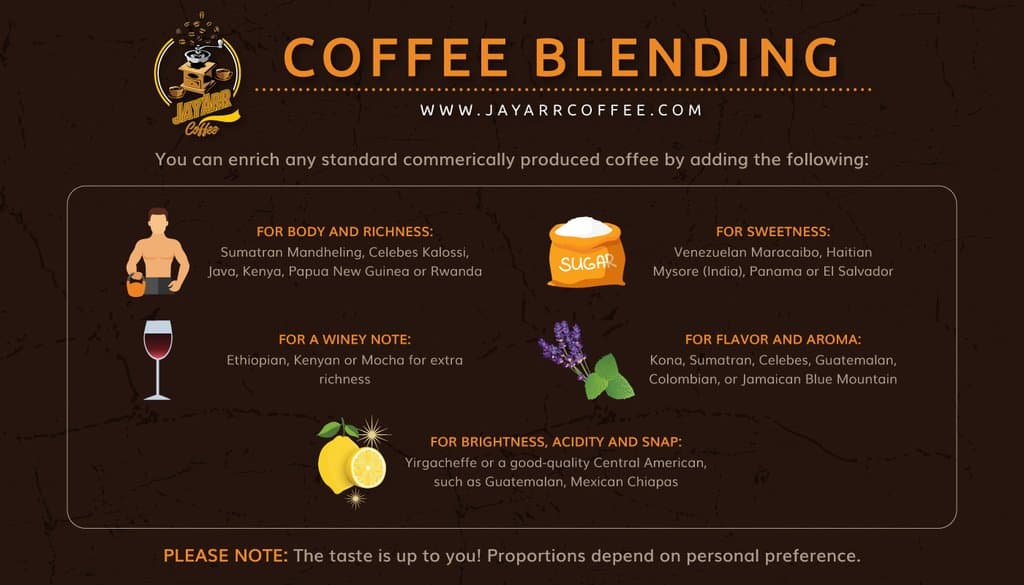
Every good coffee blend starts with a base that accounts for the largest ratio. Next, you’ll want to add other types of coffee beans to complement the first, but be careful not to pair coffees that may overpower each other.
But, as a blending novice, what’s a good ratio to initially try? There are an infinite number of strategies you can employ, but we’ll try to give you a rule of thumb: if your coffee blend is made up of three components, a sweet base note that accounts for 40% of the blend, a mid-palate satisfaction as another 40%, and a variety note that accounts for the other 20% is a good starting place.
Try initially experimenting with a 40/40/20 three coffee blend and then branch out from there. Don’t give up until you’re satisfied with the result–the possibilities are endless!
Examples of Coffee Blends to Try at Home
A quick browse on coffee discussion groups and forums will reveal tons of blended coffee recipes. A common suggestion is pairing chocolaty Brazilian coffee with the blueberry notes found in Ethiopian coffee. But, before rushing to the kitchen and trying your own blends, consider trying some of these more popular blends so that you can get a general feeling of what to expect:
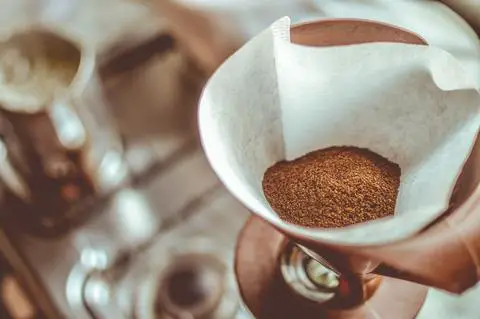
- Filter-Drip Mélange: The components of a filter-drip mélange depend on the body. If you’re after coffee with an acidic snap and a good body, your blend might include 40% Brazilian, Nicaraguan, or Colombian that is roasted Full City, 40% Kenyan that is roasted City (for bright acidity), and 20% Mexican that is roasted French. For a bittersweet mélange, blend 60% Nicaraguan or Colombian coffee at Full City and 40% of the same coffee at City
- Mokha Java Filter Drip Blend: Arguably one of the best known and oldest blends in the coffee industry, the Mokha-Java is a classic two component blend. The typical combination ratio includes 60% Sumatra Mandheling roasted Full City and 40% Yemen Mocha. The resulting cup is rich and smooth with a deep cocoa flavor and full body.
- Robusta Blends: Although Robustas have their fair share of critics, there are some high-quality beans that brew excellent coffee. If you’re one of the few people who fancy a Robusta blend, it might comprise of 70% Brazilian as the base, 15% Robusta (clean and washed), and 15% Central American.
- Aggressively Chocolaty Blend: Feeling adventurous? Why not go for a chocolatey blend by utilizing the unique tasting notes of Central American coffees? Try 50% Brazil (dry-processed), 25% Sumatra (dry-processed), and 25% Yemen or Ethiopian Sidamo.
- Indian Monsooned-Type Blend: For a characteristic Indian monsooned-type blend, you can start off with 60% Monsooned Malabar as the base, 20% Sulawesi or Indian Arabica (wet-processed), and 20% Indonesian Robusta (wet-processed).
- All Decaf Blend: If you’re aiming for a low caffeine espresso, you can try 50% Sumatra decaf and 50% Brazil decaf.
Challenges
Let’s be honest, creating your own coffee blends won’t be a walk in the park! There’s a good chance that you’ll come up with a cup that resembles nothing more than muddy water–at least once or twice. Balancing factors like roast profile, flavor notes, acidity, and body is not a walk in the park, so don’t expect to create a café-worthy cup overnight.
The key to nailing down the ideal blend that perfectly fits your palate is patience–and as the saying goes, “Practice makes perfect.” After figuring out what you want from your blend, experiment until you arrive at a cup of coffee that hits the spot.
Even after creating a distinctive, balanced, and delicious blend, the challenges aren’t over. Due to the seasonality of some single-origin coffees, you might be forced to replace one or two of the component coffees even after you’ve crafted your masterpiece!
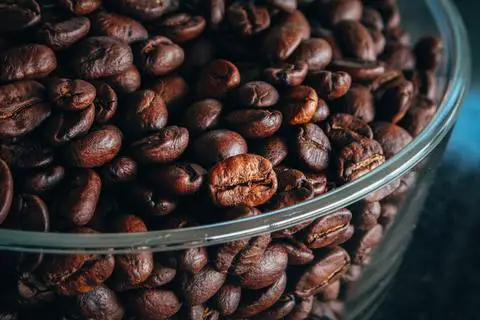
Give Custom Blending a Try!
The golden rule when blending is to get the right ingredients in just the right proportion. With this in mind, you must be ready to do some digging into the flavor profile and aromatic characteristics you desire out of your favorite single-origin coffees. In fact, researching and selecting the right coffees for your blend is the hard part–the rest is child’s play.
It doesn’t matter whether you’re a single-origin devotee or a blend lover, creating your own blend takes your coffee satisfaction and knowledge of the craft up a couple of notches. It gives you the opportunity to maintain consistency and create the perfect cup of coffee tailored to your taste buds. And who knows, you might end up creating the next big thing.
